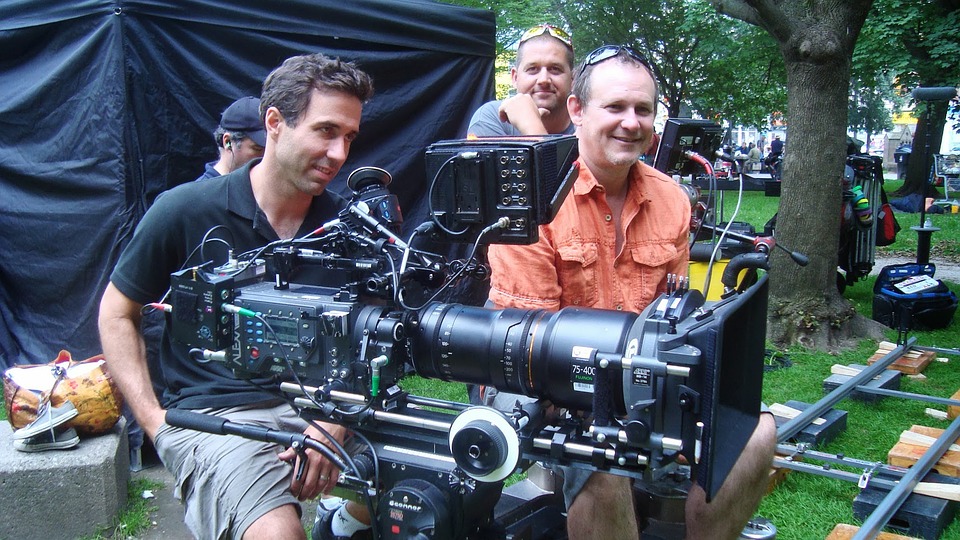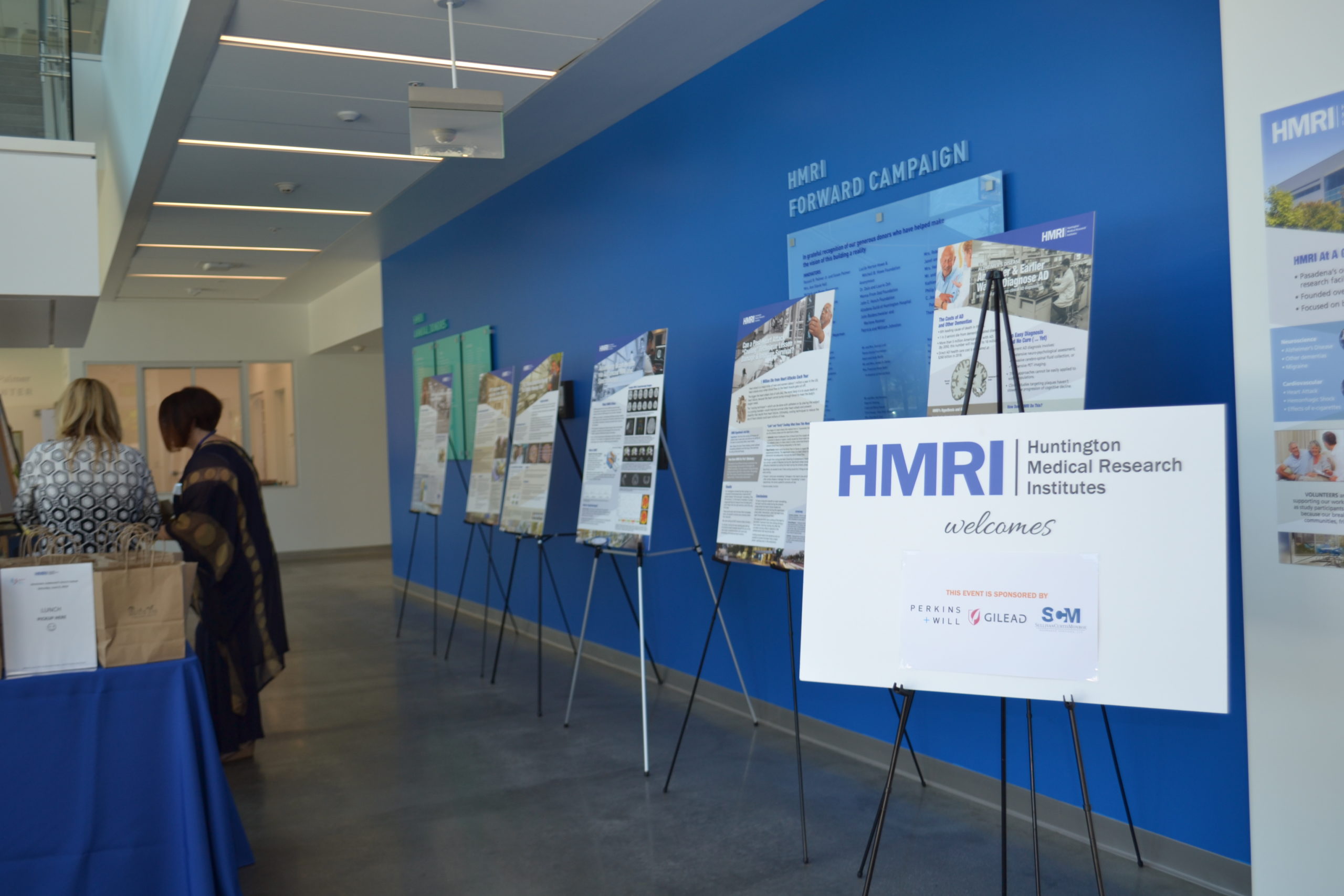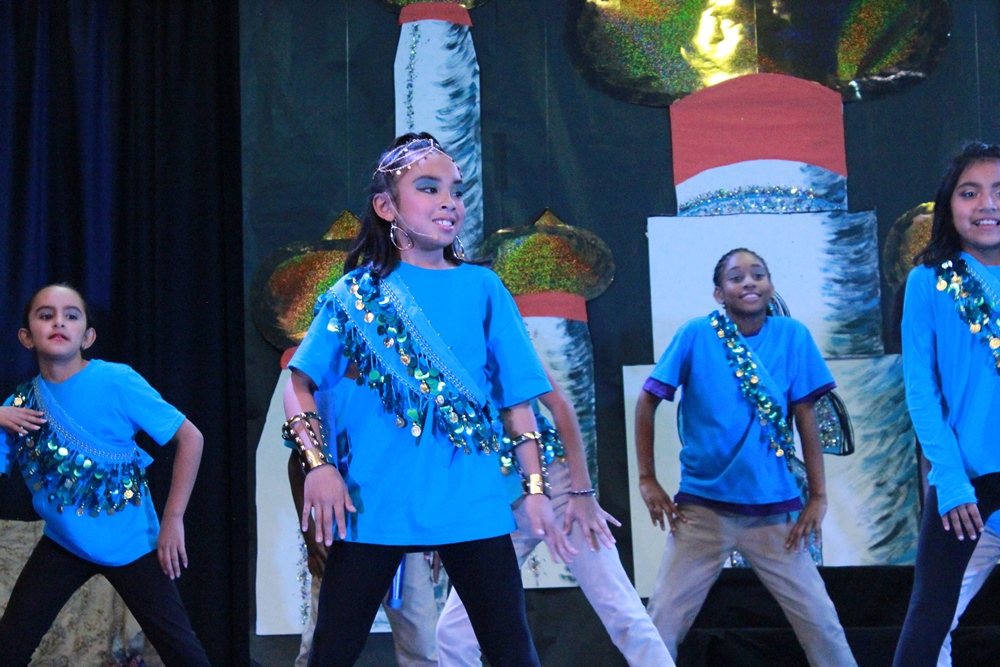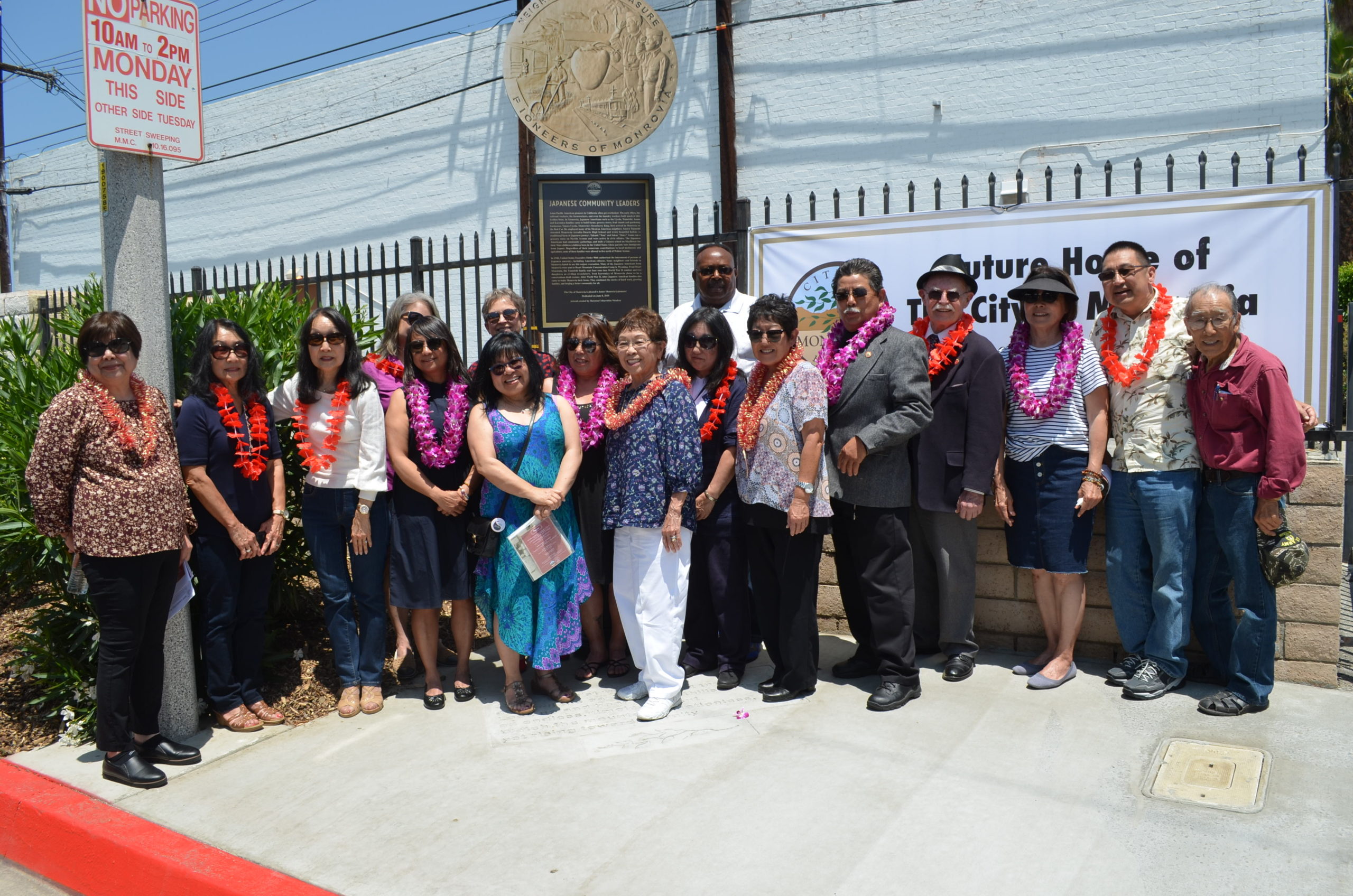
By Susie Ling
There were about a dozen Tsuneishis, three Morimoto sisters, three Sakatani sisters, three Asano cousins, Kuromiyas, Nakanos, Satas, Inouye, 98-year young Ted Hashimoto (who graduated from M.A.D. High School in 1941), 99-year young Helen Mimaki, and their family and friends. There were also Monrovia City Council members, Monrovia Historical Society folk, ChangeMakers, the communications VP from Irwindale Speedway, architect from Pasadena, and many others to spike up the outdoor party. The occasion on June 8, 2019 was the unveiling of a bronze art piece by Maryrose Mendoza at 300 W. Cypress that honors the history of Japanese Americans in Monrovia. Kerri Zessau from City Hall said, “I think there were about 160 people. Isn’t it fantastic that art brings together people? That is exactly the goal of the Neighborhood Treasure project.”

Steve Baker, the town’s award-winning historian said, “Records show that Monrovia-Duarte had 71 Japanese Americans in 1920.” Monrovia is not unique in that Japanese Americans came in the early 20th century to work as vegetable peddlers, fruit farmers, gardeners, and entrepreneurs. And they came to raise families. Monrovia is unique in that the Japanese Americans mingled with African Americans and Mexican Americans – south of the Red Car tracks. And Monrovia is special in investing in art work to honor this ethnic legacy.
During World War II, most Japanese Americans from Monrovia were sent to Pomona Fairgrounds and Heart Mountain concentration camp in Wyoming. From there, some of the Monrovians went into military service, while others became conscientious draft resistors. Some came back to Monrovia after the war, others had different paths. But the art work brought people and their precious stories back together.
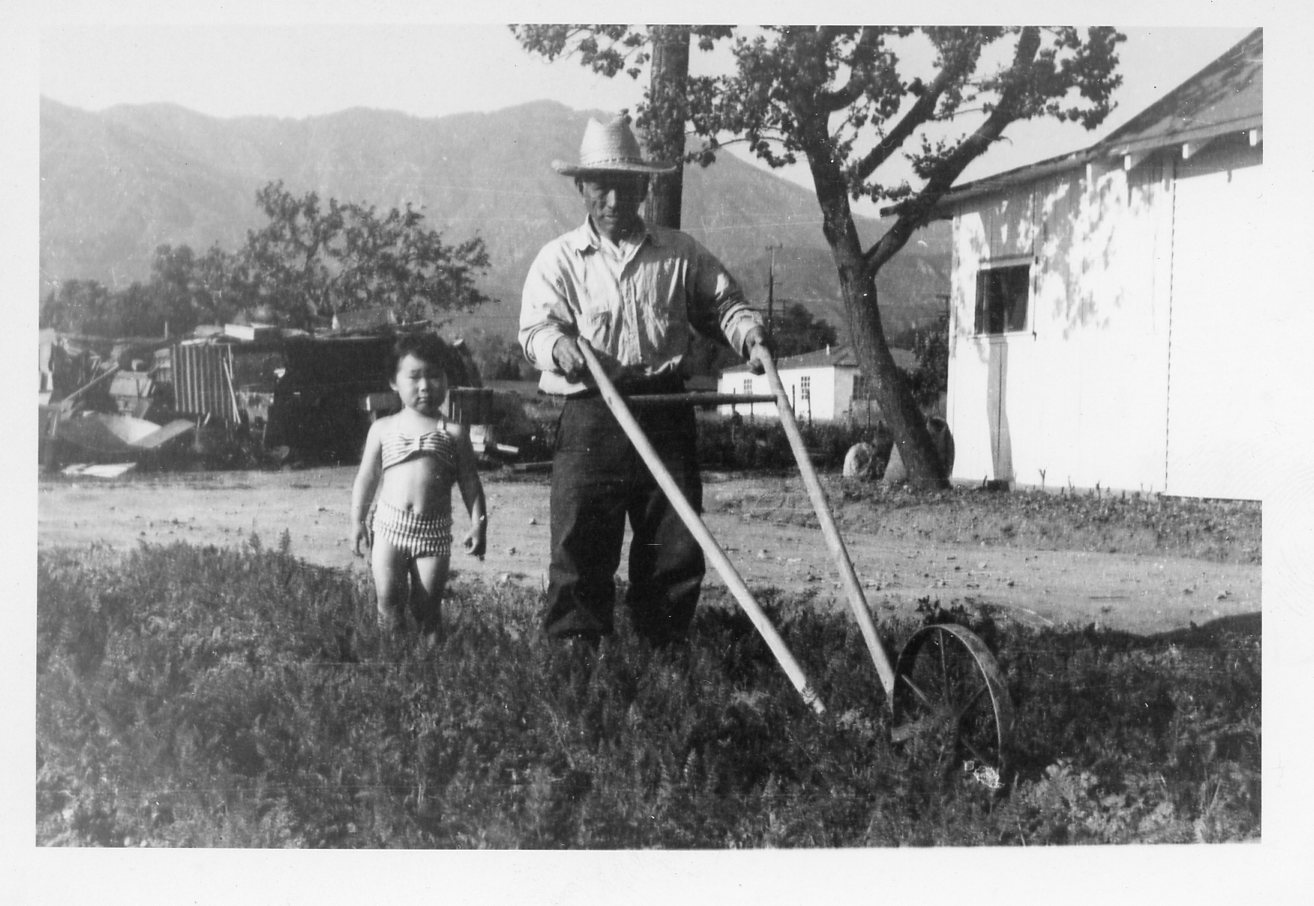
Craig Jimenez of City Hall also said, “Stay tuned for more Neighborhood Treasure projects later on this year.”

